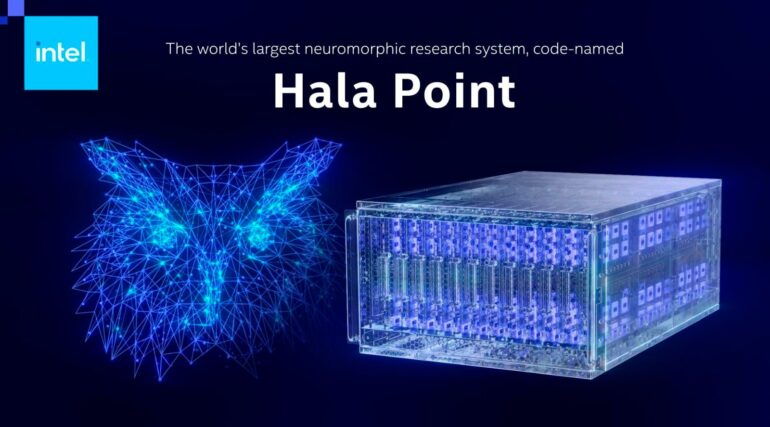- Intel introduces Hala Point, a cutting-edge neuromorphic system for sustainable AI.
- Hala Point features 1152 Loihi 2 processors, supporting up to 20 quadrillion operations per second.
- The system leverages neuromorphic computing to reduce energy consumption and enhance efficiency.
- Hala Point builds upon Intel’s Pohoiki Springs, offering increased neuron capacity and performance.
- Limited access is granted to Intel Neuromorphic Research Community (INRC) members for feedback and testing.
- Potential impact: Hala Point could revolutionize AI training efficiency and stimulate competition in the market.
Main AI News:
In today’s era of technological evolution, the demand for effective and eco-friendly computing solutions is paramount. A system capable of emulating human data processing and storage methods holds significant promise, potentially revolutionizing AI model capabilities in energy efficiency, bias reduction, interpretability, and adaptability.
Intel’s latest revelation, Hala Point, marks a significant stride in this direction. This brain-inspired neuromorphic system is designed for sustainable and efficient AI operations. Featuring an impressive array of 1152 Loihi 2 processors, Hala Point boasts a staggering capacity of up to 20 quadrillion operations per second. This computational prowess enables real-time AI applications and the handling of complex tasks with ease.
At the heart of Hala Point lies its utilization of neuromorphic computing, which effectively curtails energy requirements for computational tasks. This strategic move aligns perfectly with Intel’s overarching goal of tackling sustainability hurdles associated with burgeoning AI models. Leveraging sparse connectivity and event-driven activity, Hala Point achieves remarkable efficiencies in deep neural network operations.
Situated at Sandia National Laboratories, Hala Point builds upon the foundation laid by its predecessor, Pohoiki Springs, by significantly augmenting neuron capacity and overall performance. Its deployment in brain-scale computing research at Sandia National Laboratories positions Hala Point as a potential testbed for future AI and machine learning innovations.
According to Mike Davies, Director of the Neuromorphic Computing Lab at Intel Labs, “Today’s AI models incur unsustainable computing costs, necessitating fundamentally new approaches to scalability. Hala Point embodies this ethos by amalgamating deep learning efficiency with groundbreaking brain-inspired learning and optimization capabilities. We anticipate that research with Hala Point will propel the efficiency and adaptability of large-scale AI technology.”
Diverging from traditional sequential processing, neuromorphic computers, like Hala Point, operate in parallel, employing artificial neurons for data storage and computation. This departure from conventional architectures significantly slashes energy consumption while accelerating data processing speeds, setting a new benchmark in computing efficiency.
Although not accessible to the general public, Intel asserts that Hala Point can tackle optimization challenges with a fraction of the energy consumption and at speeds 50 times faster than GPU and CPU counterparts. To solicit feedback and augment its capabilities, Intel has extended limited access to over 200 members of the Intel Neuromorphic Research Community (INRC), comprising government labs, academic institutions, and research firms.
While Hala Point’s journey is in its nascent stages, it already showcases the potential to provide a sustainable and efficient framework for AI training. Intel’s roadmap includes further advancements, leveraging principles from neuroscience to minimize power consumption while maximizing performance.
Should Hala Point live up to its promise, it will likely usher in heightened competition within the industry. The impending release of DeepSouth, another neuromorphic supercomputer capable of full-scale synapse simulation, underscores the evolving landscape of AI computing, promising even more innovations in the near future.
Conclusion:
Intel’s unveiling of Hala Point signifies a pivotal advancement in sustainable AI computing. With its groundbreaking capabilities and potential to reshape AI training efficiency, Hala Point is poised to drive significant competition and innovation within the market. This move underscores Intel’s commitment to pioneering eco-friendly computing solutions and sets a new benchmark for the industry as a whole.

